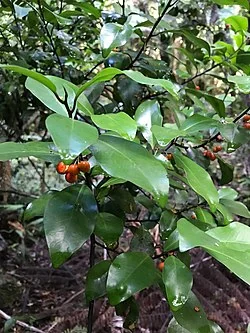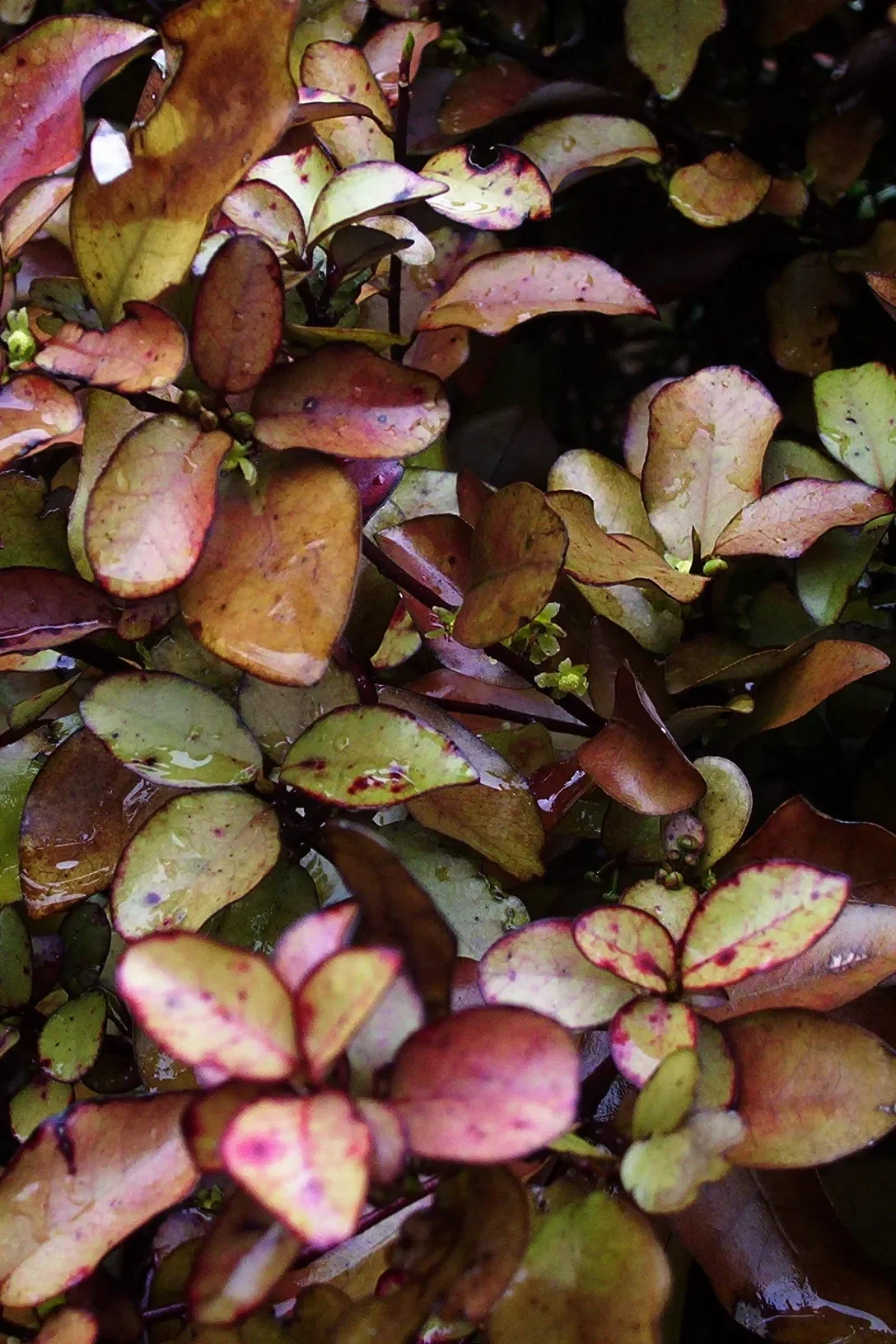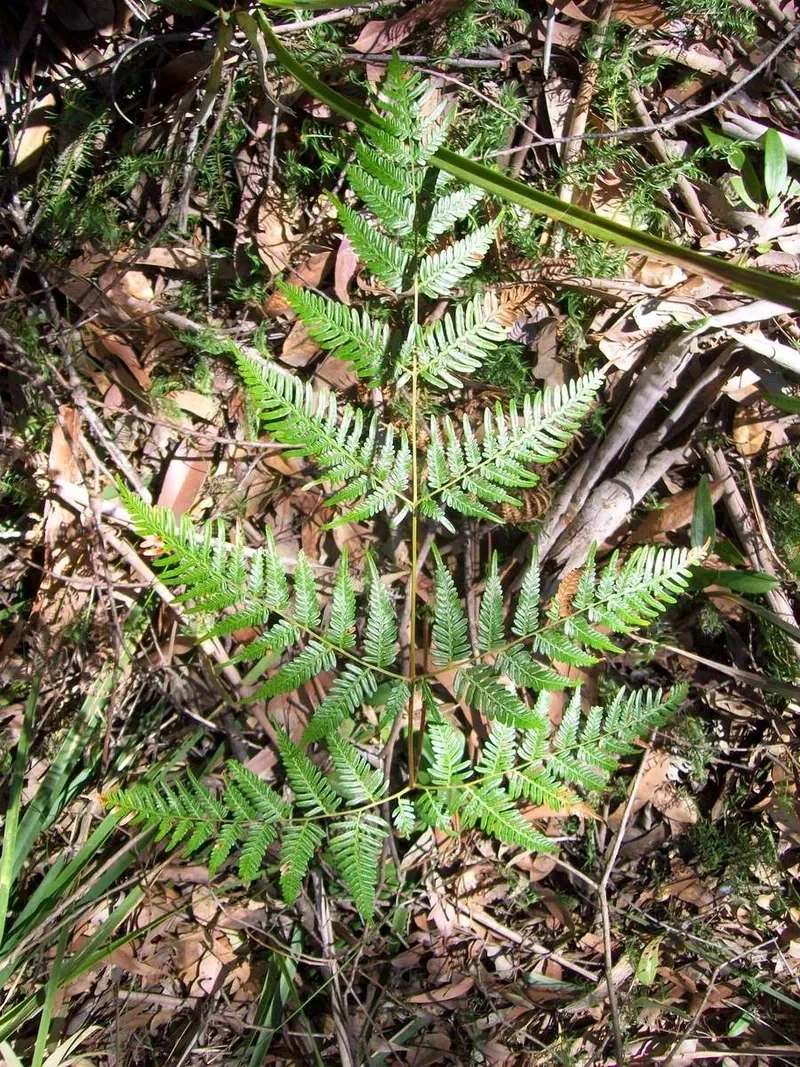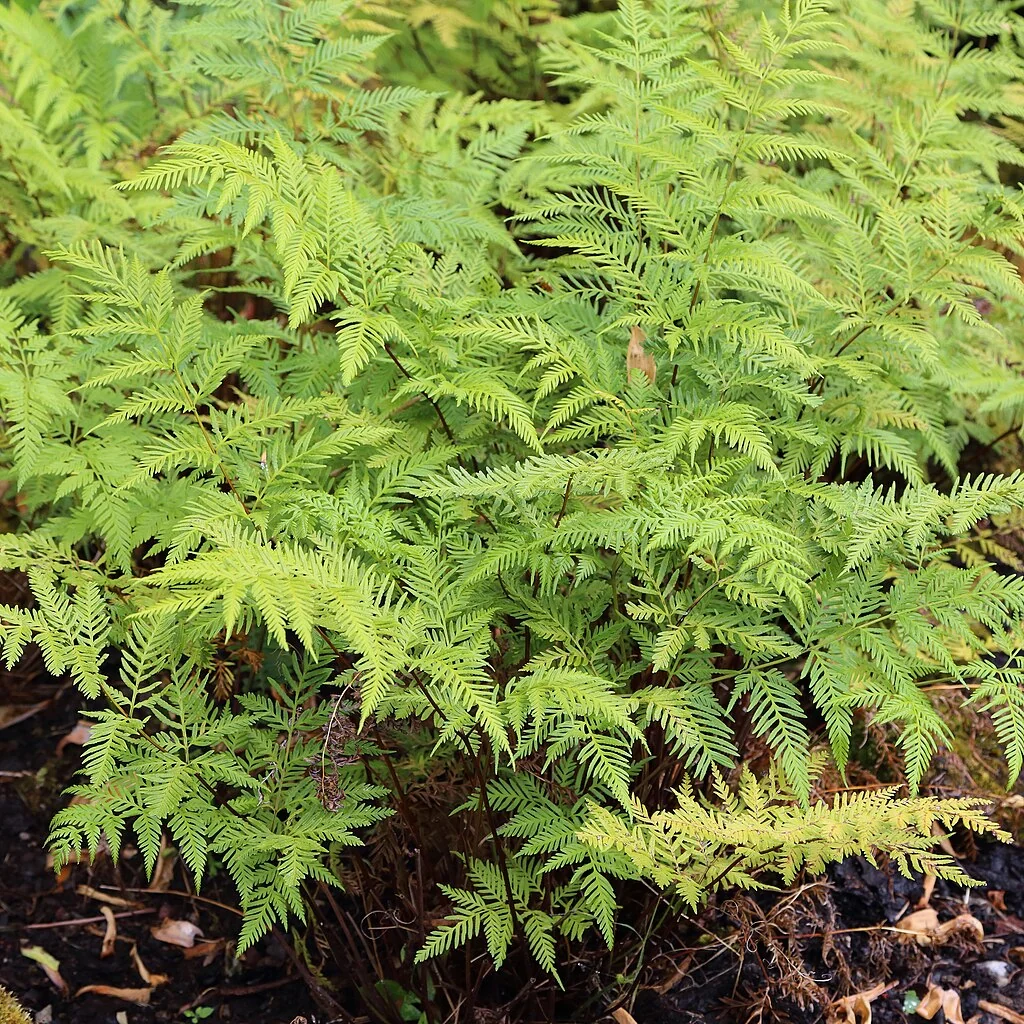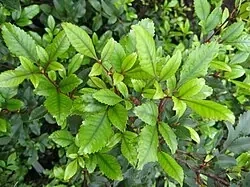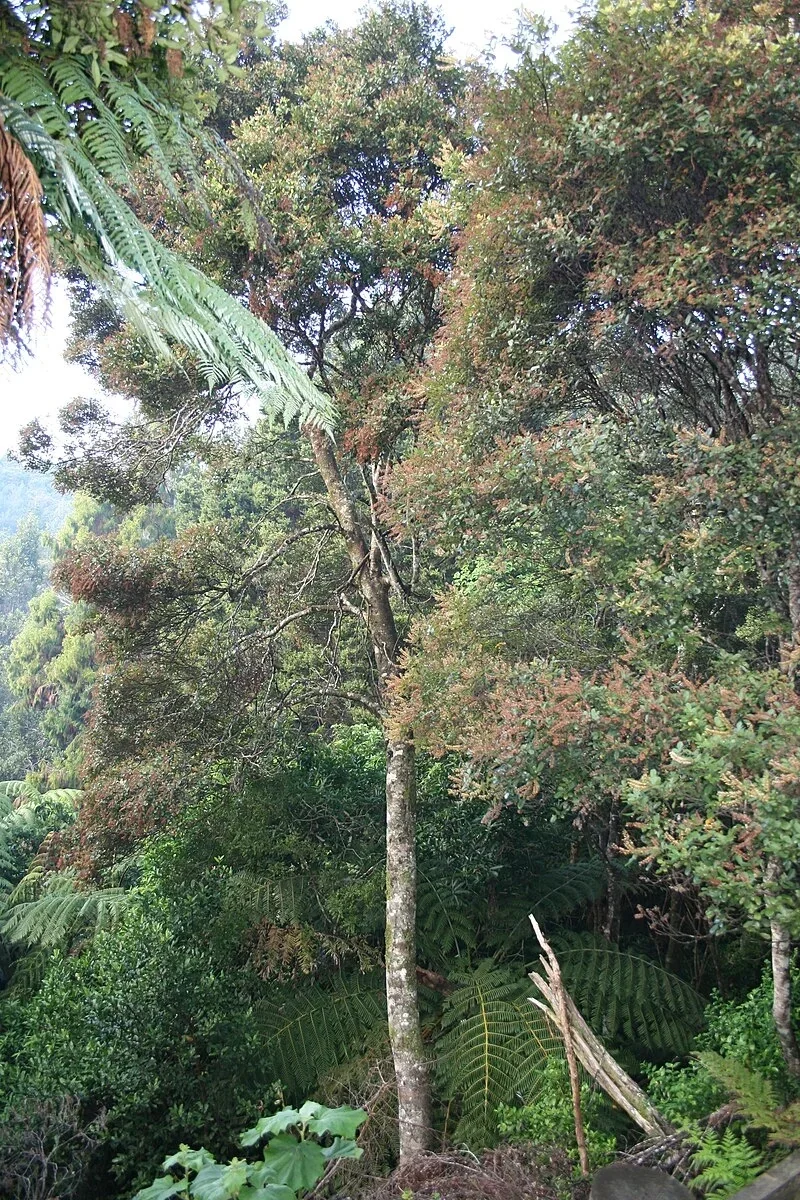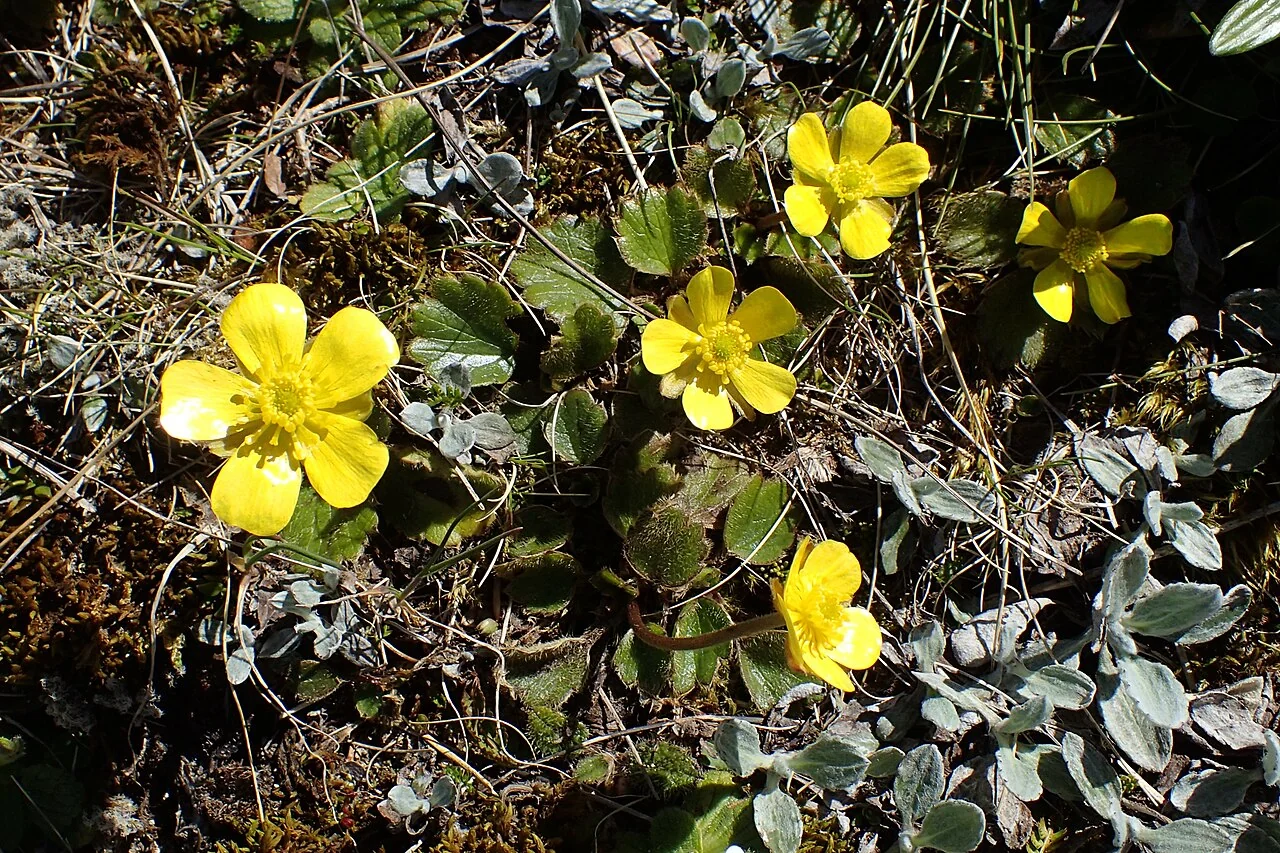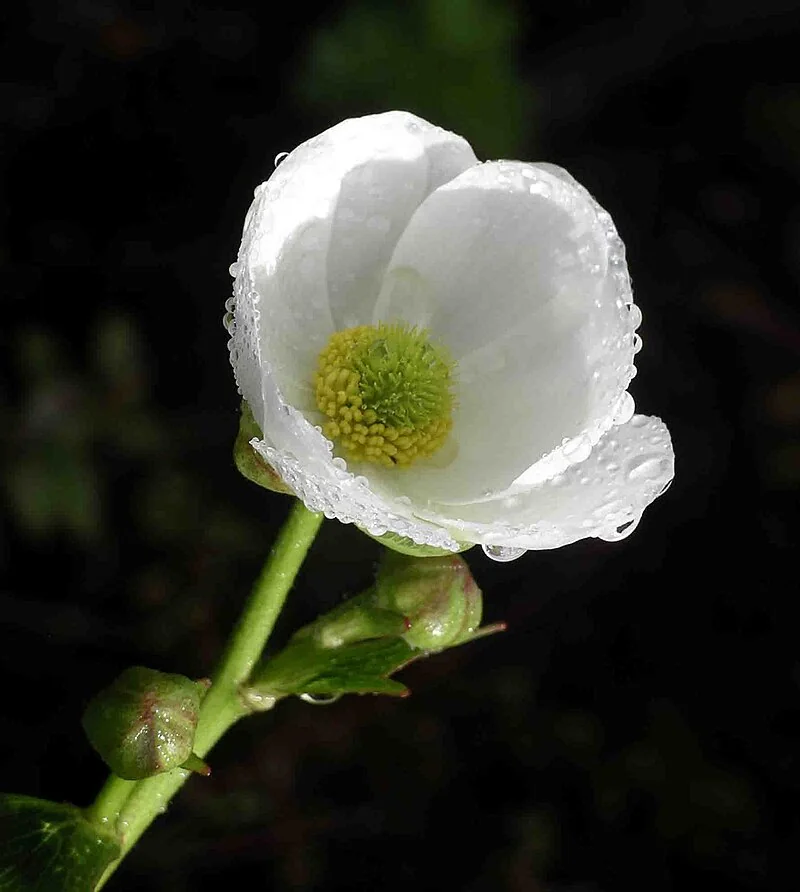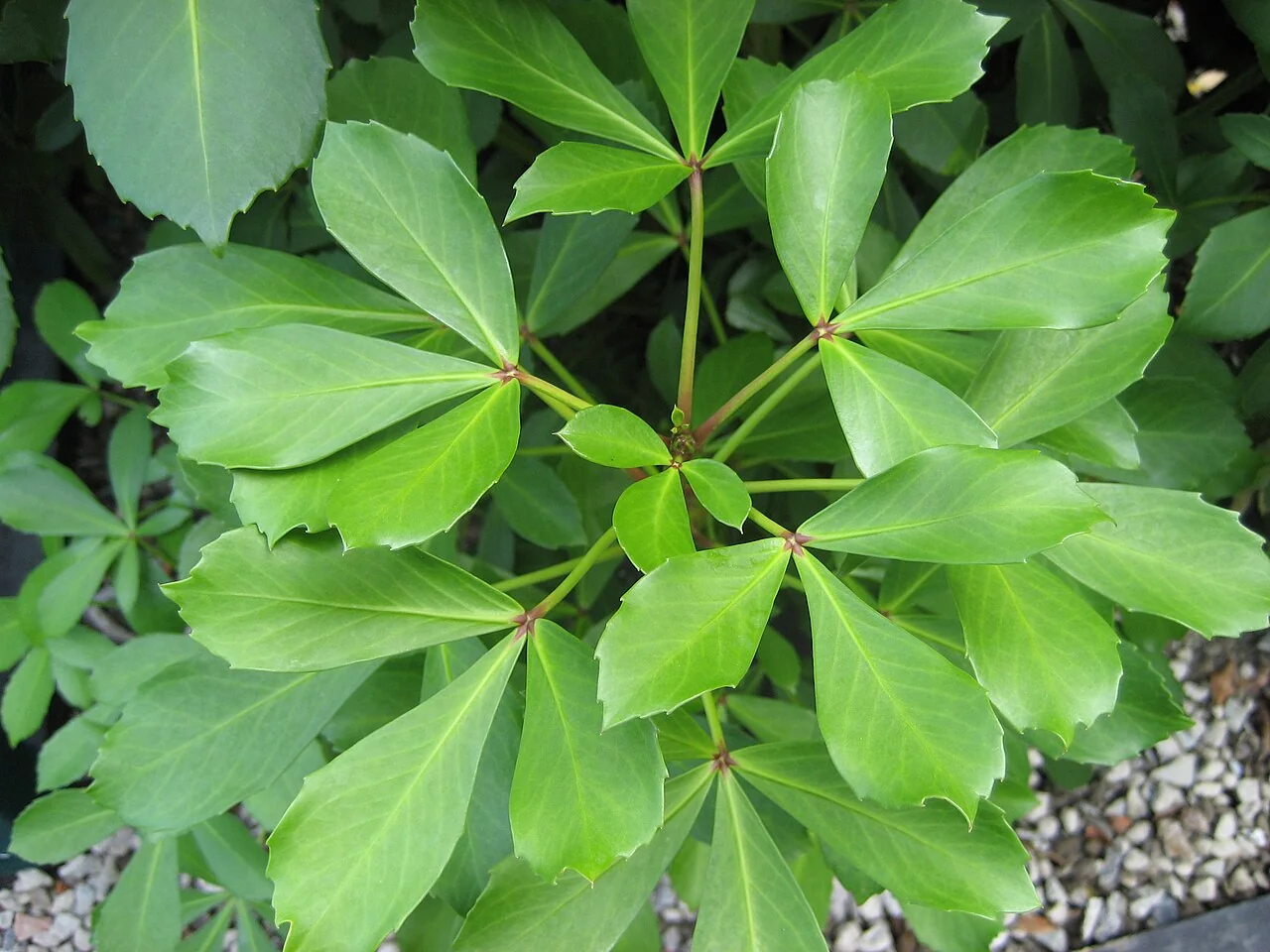
Houpara
Pseudopanax lessonii
Houpara (Pseudopanax lessonii) stands as one of New Zealand's most distinctive coastal trees, naturally occurring only on the Three Kings Islands and Taranga Island north of New Zealand. This remarkable endemic species is easily recognized by its large, glossy coMāpound leaves that can reach impressive sizes, making it unique among the Pseudopanax genus. Known for its robust coastal adaptation and striking architectural foliage, Houpara has become increasingly valued in cultivation for its dramatic appearance and excellent wind tolerance. Despite its limited natural range, this species demonstrates remarkable adaptability to garden conditions and represents an excellent choice for coastal native tree plantings throughout New Zealand.

Plant Description
Botanical Features
Houpara (Pseudopanax lessonii), also known as five-finger, is an evergreen shrub or small tree native to New Zealand. It typically grows up to 6 meters tall with stout branches. The plant is known for its fleshy, palmate-shaped, dark green leaves, which are crowded towards the tips of the branchlets. Each leaf has 3 to 5 leaflets, with juvenile plants having larger leaves than adults. The leaflets are often leathery, broadly oval, and may have shallow serrations or blunt teeth near their tips. Small green flowers are produced from December to February. These are followed by dark purple, fleshy, broadly oblong fruits, about 7 x 5 mm, containing 5 seeds. It is endemic to New Zealand, found in coastal forests and scrub from the Three Kings Islands south to Poverty Bay in the North Island. It thrives in subtropical climates and is well-suited to coastal environments.
Quick Facts
| Scientific Name | Pseudopanax lessonii |
|---|---|
| Height | 4-8 m |
| Spread | 3-6 m |
| Water Needs | Moderate, very drought tolerant |
| Light | Full sun to partial shade |
| Frost Tolerance | Hardy once established |
| Salt Tolerance | Excellent |
| Growth Rate | Medium |
| Lifespan | Long |
Climate Best Suited to
Houpara (Pseudopanax lessonii) naturally occurs in the mild, maritime climate of New Zealand's northern offshore islands, where it experiences consistently moderate temperatures and high humidity year-round. This species thrives in coastal conditions with salt spray tolerance and shows excellent adaptation to windy environments. The mild, frost-free conditions of its natural range make it well-suited to New Zealand's warmer regions, though it demonstrates good adaptability to slightly cooler climates once established. Its preference for coastal conditions makes it particularly valuable for exposed seaside plantings.
Regional Suitability
| City | Climate Suitability |
|---|---|
| Whangārei | Ideal |
| Auckland | Ideal |
| Hamilton | Good |
| Tauranga | Ideal |
| Rotorua | Good |
| Gisborne | Ideal |
| New Plymouth | Ideal |
| Napier | Good |
| Whanganui | Good |
| Palmerston North | Good |
| Wellington | Ideal |
| Nelson | Ideal |
| Christchurch | Good |
| Dunedin | Moderate |
| Invercargill | Moderate |
Natural Habitat
Houpara (Pseudopanax lessonii), also known as Five Finger, is a shrub native to New Zealand. It thrives in subtropical climates and is typically found in coastal and lowland forests, as well as scrubby areas. Its natural range extends from the Three Kings Islands down to Poverty Bay on the North Island.
Key Habitats Include:
- Coastal and Lowland Forests: It is a common component of coastal and lowland forests, often found in the understory or along forest margins.
- Scrubby Areas: Houpara also thrives in scrubby areas, demonstrating its adaptability to open and semi-exposed sites.
- Three Kings Islands: It is naturally occurring only on the Three Kings Islands and Taranga Island north of New Zealand, highlighting its restricted natural range.
Preferred Conditions:
- Subtropical Climate: It prefers subtropical climates with mild temperatures and high humidity.
- Well-Drained Soils: It thrives in well-drained, humus-rich soils, but is adaptable to various soil types, including sandy coastal soils.
- Wind Tolerance: Houpara exhibits excellent wind tolerance, making it well-suited to coastal environments.
The presence of Pseudopanax lessonii in these diverse habitats underscores its ecological importance in contributing to the biodiversity and structural complexity of New Zealand's native coastal ecosystems.
Plant Conservation
Conservation
Pseudopanax lessonii, commonly known as houpara or coastal five-finger, is a New Zealand native tree. It is endemic to New Zealand, found in coastal forests and scrub from the Three Kings Islands to Poverty Bay and northern Taranaki. According to recent assessments in 2022-2023 using the New Zealand Threat Classification System (NZTCS), the current conservation status of Pseudopanax lessonii is "Not Threatened." While not currently endangered, populations can be threatened by browsing from possums, deer, and goats. It's important to note that in some areas, particularly outside its native distribution, houpara and its hybrids have escaped cultivation and can become invasive weeds, posing a threat to local biodiversity and even its own genetic background through hybridization with other Pseudopanax species.
Growing Requirements
Soil Requirements
Houpara (Pseudopanax lessonii) is remarkably adaptable to various soil types, from sandy coastal soils to heavier clay conditions. The species requires good drainage but shows excellent tolerance to poor soils and coastal conditions. It performs well in moderately fertile soils but does not require rich conditions to thrive. The natural adaptation to island soils means it tolerates rocky, shallow soils better than many other native trees.
- Adaptable to wide range of soil types from sand to clay
- Requires good drainage but tolerates occasional waterlogging
- Performs well in poor, rocky, or shallow soils
- Tolerates coastal conditions including salt spray
- Benefits from mulching to retain moisture during establishment
Light Requirements
Houpara (Pseudopanax lessonii) performs best in full sun positions where it develops its most characteristic compact, dense growth habit. The species can tolerate partial shade but may become more open in habit with reduced flowering. Full sun exposure enhances the glossy appearance of the distinctive coMāpound leaves and promotes the best structural development.
- Prefers full sun for optimal growth and compact habit
- Can tolerate partial shade but may become leggy
- Full sun enhances leaf color and gloss
- Excellent tolerance to wind and exposed conditions
- At least 6 hours of direct sunlight daily is ideal
Water Requirements
Houpara (Pseudopanax lessonii) demonstrates excellent drought tolerance once established, reflecting its adaptation to island conditions with irregular rainfall. During establishment, consistent moisture helps develop a strong root system, but mature plants can withstand extended dry periods. The species benefits from regular watering during prolonged droughts but generally requires minimal irrigation in most New Zealand climates.
- Moderate watering during establishment phase
- Excellent drought tolerance once mature
- Can handle occasional waterlogging
- Reduce watering during winter months
- Deep, infrequent watering promotes strong roots
Planting Guide
Plant houpara in full sun to light shade with excellent drainage. In coastal gardens, provide windbreaks while young; water regularly the first summer, then reduce.
- Soil: Free-draining, moderately fertile; avoid waterlogging.
- Spacing: 1.5-3 m depending on desired screen density.
- Mulch: Organic mulch to conserve moisture and suppress weeds.
Ecosystem Notes
- Coastal tolerance: Handles salt-laden winds once established.
- Habitat value: Provides evergreen cover and seasonal resources.
- Associates: With p hutukawa, karo, and coastal coprosmas.
Uses and Significance
Garden Uses
- Excellent specimen tree for architectural garden designs
- Outstanding choice for coastal and exposed locations
- Large coMāpound leaves provide distinctive foliage contrast
- Suitable for smaller residential properties
- Perfect for modern landscape and native garden designs
Practical Applications
Houpara (Pseudopanax lessonii) serves excellent practical purposes in landscape design, particularly for creating windbreaks and screens in coastal areas. Its dense growth habit and salt tolerance make it valuable for coastal protection plantings, while the attractive foliage makes it suitable for more ornamental applications. The species works well in both formal and informal garden settings, providing structure and year-round interest.
- Excellent for coastal windbreaks and shelter belts
- Effective screening plant for privacy and wind protection
- Suitable for both formal and informal garden designs
- Low maintenance once established
- Provides year-round structural garden interest
Landscaping Ideas
- Architectural screen: Large, glossy leaflets give bold texture in modern gardens.
- Coastal hedging: Ideal for wind-filtering shelter belts in mild climates.
- Specimen: Use as a focal point with contrasting fine textures.
Seasonal Care Calendar
Spring
Spring marks the beginning of active growth for Houpara (Pseudopanax lessonii), with new coMāpound leaves emerging and the tree showing renewed vigor after winter. This is an excellent time for planting new specimens or conducting any necessary pruning. Apply organic fertilizer if desired and gradually increase watering as temperatures warm and growth activity increases.
- New coMāpound leaves emerge with fresh growth
- Apply organic fertilizer if enhanced growth is desired
- Ideal time for planting new specimens
- Conduct formative pruning before active growth
- Gradually increase watering as growth resumes
Summer
Summer is the peak growing season for Houpara (Pseudopanax lessonii), with flowering typically occurring during the warmer months. The distinctive foliage reaches its most glossy and attractive appearance during this period. Maintain adequate moisture for young plants, though established specimens will demonstrate their excellent drought tolerance during dry spells.
- Peak growing season with maximum foliage development
- Flowering occurs on mature trees during summer months
- Maintain watering for young or newly planted specimens
- Established trees demonstrate excellent drought tolerance
- Monitor for pest issues in humid conditions
Autumn
During autumn, Houpara (Pseudopanax lessonii) may produce berries if flowering has been successful, providing food for native birds. This is an excellent time for collecting seed for propagation and for planting new specimens before winter. Begin reducing watering frequency as growth slows and temperatures cool.
- Berry production provides food for native birds
- Excellent time for seed collection for propagation
- Good planting time for establishment before winter
- Begin reducing watering frequency gradually
- Apply mulch to protect roots from winter cold
Winter
Winter is a relatively dormant period for Houpara (Pseudopanax lessonii), though the evergreen foliage continues to provide garden structure and interest. The species shows good cold tolerance once established. This is the optimal time for major structural pruning if required, while the tree is dormant and less likely to be stressed by pruning operations.
- Dormant period with reduced growth activity
- Evergreen foliage provides continued garden interest
- Good cold tolerance once established
- Optimal time for major structural pruning
- Significantly reduce watering during dormancy
When to Prune and How Much
Houpara (Pseudopanax lessonii) naturally develops an attractive, dense form and requires minimal pruning to maintain its shape. Focus on removing dead, damaged, or crossing branches and any light shaping needed for specific garden applications. The species responds well to pruning but should be pruned conservatively to maintain its natural character and distinctive foliage display.
- Remove dead, damaged, or diseased branches any time of year
- Light formative pruning when young helps establish good structure
- Major pruning best done in late winter during dormancy
- Can be lightly pruned to control size or shape
- Remove any rubbing or crossing branches to prevent damage
- Avoid heavy pruning which may affect the natural form
Always use clean, sharp pruning tools to minimize disease risk and ensure clean cuts. The large coMāpound leaves are a key feature of this species, so pruning should aim to preserve the natural branching pattern that displays these distinctive leaves to best advantage.
How to Grow Houpara
Houpara (Pseudopanax lessonii) can be successfully propagated through several methods, with seed propagation being reliable when fresh seed is available, and cutting propagation offering good success rates for maintaining specific characteristics. The species is generally easy to grow once the basic requirements are understood, making it an excellent choice for both novice and experienced gardeners interested in unique native trees.
From Seed
Growing Houpara from seed is straightforward and provides genetic diversity important for maintaining healthy populations. Fresh seed offers the best germination rates and should be collected when berries are fully ripe and have been processed by birds or naturally weathered.
- Collect ripe berries from mature trees in autumn (March-May) when fruits are dark purple-black and soft to touch
- Extract seeds by gently crushing berries and washing away pulp with clean water, leaving the hard seeds behind
- Seeds can be sown immediately for best results, or stored in slightly moist sand in the refrigerator for later use
- Sow seeds in well-draining seed-raising mix at approximately 10mm depth
- Maintain consistent moisture and place in warm, bright location with temperatures around 18-22°C
- Provide bright, indirect light and protect from direct sunlight
- Germination typically occurs within 3-6 weeks, though some seeds may take longer to sprout
- Transplant seedlings to individual pots when they reach 10-15cm height and have developed several true leaves
- Grow on in containers for at least one full growing season before planting in permanent positions
Seedlings typically develop the characteristic coMāpound leaves within their first year and can reach planting size within 18-24 months under good growing conditions.
From Semi-Hardwood Cuttings
Semi-hardwood cutting propagation is effective for Houpara and allows for the preservation of specific plant characteristics while providing faster establishment than seed propagation.
- Take 12-18cm cuttings from current season's growth during late summer to early autumn (February-April) when wood has begun to firm
- Remove lower leaves, retaining only 2-3 coMāpound leaves at the cutting tip
- Make clean cuts just below a node using sharp, sterilized pruning shears
- Dip cut end in rooting hormone powder to improve success rates and accelerate root development
- Insert cuttings into free-draining propagation mix of equal parts sand and compost
- Maintain high humidity by covering with plastic or placing in humidity chamber with temperatures around 18-22°C
- Provide bright, indirect light and mist regularly to prevent wilting
- Root development typically occurs within 6-10 weeks - test by gentle tugging
- Pot up rooted cuttings individually and grow on for one season before planting out
- Gradually acclimatize young plants to outdoor conditions before final transplanting
From Softwood Cuttings
Softwood cuttings taken from new spring growth can also be successful, particularly when high humidity and consistent care are maintained throughout the rooting period.
- Select healthy, soft new growth during early to mid-spring (September-November)
- Take 10-15cm cuttings early morning when plant tissues are fully hydrated
- Remove lower leaves and treat with rooting hormone if desired
- Insert into moist propagation medium and maintain very high humidity
- Provide gentle bottom heat and protection from direct sunlight
- Expect rooting within 4-8 weeks under optimal conditions
Transplanting and Establishment
Successful establishment of Houpara requires attention to site selection and post-planting care to ensure plants develop into healthy, long-lived specimens that can fully express their distinctive characteristics.
- Choose planting sites with full sun to partial shade and good air circulation
- Prepare soil by ensuring good drainage while incorporating organic matter for moisture retention
- Plant at the same depth as in containers, avoiding burying the stem base
- Water thoroughly after planting and maintain consistent soil moisture during the first growing season
- Apply organic mulch around plants to retain moisture and suppress weeds
- Provide stake support in windy locations until well established
- Monitor for establishment signs including new growth and increased vigor
- Protect from browsing animals and mechanical damage during establishment
With proper care, Houpara establishes readily and begins developing its characteristic large coMāpound leaves within the first growing season, eventually growing into a distinctive specimen tree that provides decades of garden interest and ecological value.
Pests and Diseases
- Root stress: Avoid waterlogged soils; yellowing can indicate drainage issues.
- Scale and mealybugs: Treat with horticultural oils; improve airflow in dense screens.
- Wind scorch: Temporary protection helps new plantings in exposed coastal sites.
Cultural Significance
Cultural Importance
Coastal Houpara
Houpara's bold, glossy foliage and coastal resilience make it a staple of northern native gardens and shelter belts, expressing a regional coastal aesthetic.
Pseudopanax lessonii, also known by its Māori name Houpara, holds cultural significance primarily through its traditional uses by Māori and early European settlers in New Zealand. For Māori, the plant had several practical applications: the wood of Pseudopanax species, including P. lessonii (referred to as "parapara"), was utilized as rollers for hauling canoes. Young tree stems were sharpened and fire-hardened to create lances for hunting kerer� « (New Zealand pigeons). Māori crafted tokotoko, or walking sticks, by shaping living saplings. Early PÄākehÄā settlers also found uses for the plant: the strong midribs of young leaves were repurposed as bootlaces and for repairing bridles and harnesses. The flexible trunks were used to make stock and horsewhips.
Bonus Tip
For a dense hedge, tip-prune lightly and often during the warm season rather than making infrequent hard cuts-this builds branching without shocking the plant.
